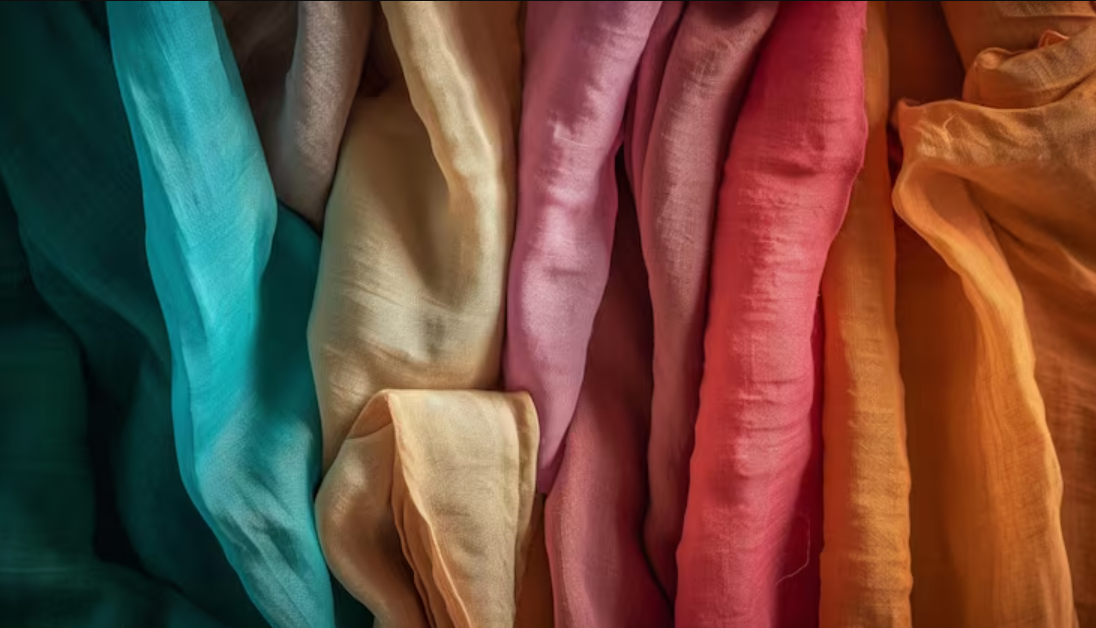Silk has always had its charm and has traveled along ancient trade routes to the courts to find its way into the making of regal attire. And perhaps even today, it finds some cultural relevance. What many people may not be aware of is that silk is not a single fabric.
There are many varieties of silk, and each variety is woven around its own set of stories. The texture and finish of silk differ with origin, thereby making it important for one to know the types of silk and be able to identify them.
What are the Different Types of Silk
- Mulberry Silk
Probably the most well-known and highly commercialized silk is the mulberry silk. Noted for its smooth texture and elegant finish, it is produced by a breed of silkworms that feed solely on mulberry leaves. This kind of diet lends the fiber a fine, almost very pure kind of quality.
Touching mulberry silk reveals an all-pervasive soft feel, as though it were fluid in smoothness. With a natural pearly sheen, it made its way into the making of bedding, scarves, and haute couture. It is also known to be strong, although it may look very fragile.
- Tussar Silk
Tussar silk speaks a language of rustic beauty. It is often called wild silk, for the silkworms thrive in forest areas. Its fibers from nature take a pale golden-brown tinge, granting it an earthy charm. It is not like mulberry. Tussar is more textured, with a slightly uneven surface, which lends it character.
Popularly chosen for sarees and artisanal wear, it represents elegance with an organic twist. Hold tussar silk against the light, and you’ll notice a warm, understated glow rather than high shine.
- Eri Silk
Eri silk, also called Ahimsa or peace silk, is one of the most ethical varieties since its production does not kill the silkworm. Its fibers are short and soft, and woven, the fabric has more of a cotton or wool feel, unlike the glossy look of mulberry or muga silk, which is matte in its charm.
So, warm and comfortable, it is a choice for stoles, shawls, and winter wear. If you’re handling eri, you’ll realize instantly that it’s not about sheen, it’s about comfort and breathability.
- Muga Silk
Among the rarest types of silk, muga silk is native to Assam. Its hallmark is its golden-yellow hue that doesn’t fade with age but actually becomes more radiant. Being woven into Assamese sarees and heritage textiles for so long, the glory of the muga of the region.
If it has a deep golden luster and strong fibers, besides being shiny, it is also strongly durable. Owning a piece of muga silk is considered owning a fabric that lasts a lifetime and sometimes even generations.
- Spider Silk
Though not a part of everyday fashion, spider silk deserves mention for its extraordinary properties. Extracted directly from spiders, it is incredibly lightweight yet stronger by weight than steel.
Because large-scale production is difficult, spider silk mostly remains within the realm of research and innovation. If encountered, it feels ethereal to the touch, almost weightless, yet its tensile strength sets it apart from any other natural fiber.
Conclusion
Each silk has the story it tells, as in mulberry for elegance, tussar for rustic appeal, eri for warm ethics, and muga for golden majesty. Understanding the types of silk not only deepens one’s love for textiles but also helps the buyer in making an informed choice.
For those who love fabric more than just material, for those who see it as heritage and art, silk remains one of the richest legacies of craftsmanship. Explore the Science of Silk to know more about this exquisite fabric.


